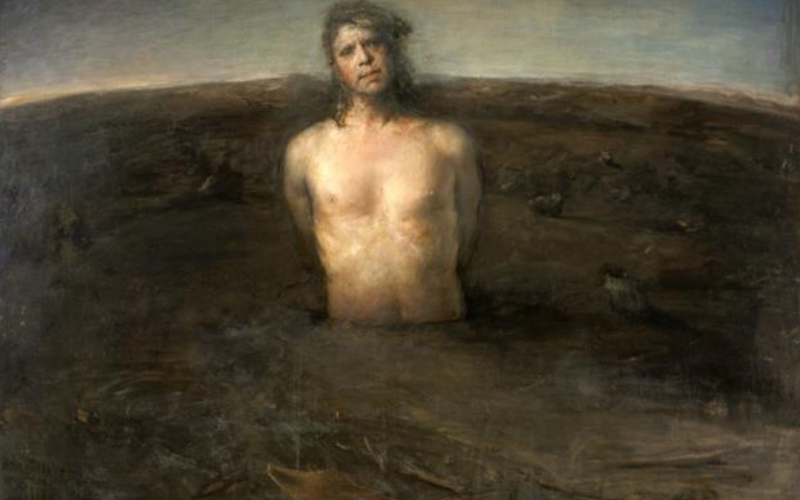A significant portion of Odd Nerdrum’s body of work consists of self-portraits. Nerdrum made a bold statement in Second Birth (2004) by choosing to portray himself as a prophet or a Messiah figure.
Prophets are significant figures in Judeo-Christian theology because they act as conduits for the public dissemination of God’s word. Prophets have a unique position and a close relationship with God, but they are frequently burdened and misunderstood individuals. They are frequently mocked and even targeted for persecution because of their calling, which compels them to speak the hard truths.
Nerdrum comments on the role and status of the artist by portraying himself in such a way that he compares the experience of an artist to that of a prophet. The artist, like the prophet, can communicate spiritual truths to his audience through his work.
Nerdrum built on the Western tradition of the self-portraiture genre, particularly the creations of Rembrandt, a Dutch master who was one of his heroes. Nerdrum even presents himself as the reincarnation of Rembrandt in Frontal Self Portrait (1998).
He referenced Rembrandt’s paintings such as [i]Self Portrait at the Age of 63[/i] (1669) and Self Portrait as the Apostle Paul in modeling himself after the Dutch master (1661). In expressing his artistic and personal identity, Nerdrum described himself as an old master and a revivifier of the painting medium. Nerdrum is accustomed to making broad comparisons of this nature. Another self-portrait of his shows him holding a brush and palette while standing barefoot in a golden robe in The Savior of Painting (1997). The historical custom brings to mind paintings by European master painters once more.
Nerdrum, who faithfully upholds the traditions of European painting, declares himself to be the medium’s savior, as the title suggests.
The artist expands on this idea in Second Birth by showing him rising from the ground, undergoing a second birth, as the title suggests. The artist even adorns a crown of thorns like Christ did on the cross, making this a clear allusion to Christ’s resurrection.
The artist is reborn through pain and suffering, just like Christ. Nerdrum emphasized psychological and spiritual suffering more than physical suffering in Second Birth.
Early works by Nerdrum, such as Hepatitis (1996-1997), are characterized by their realistic depictions of physical suffering. A man is depicted in the painting writhing in agony and appearing to take a deep breath as he gathers the strength to stand up.
The artist is depicted in a very different way in Second Birth, where his body is relaxed and his face is serene despite being buried in dirt with his arms bound in the ground. Nerdrum’s spirit is raised; his second birth is spiritual and emotional rather than physical.
Earth itself plays a significant role in Second Birth. The ground represents a place of trauma in his 1995–1996 painting Buried Alive because it serves as both a crime scene and a weapon.
The earth can also be seen as a site of a psychological trauma in Second Birth. The artist in this instance, however, emerges from the wreckage and is reborn from this place of trauma.


